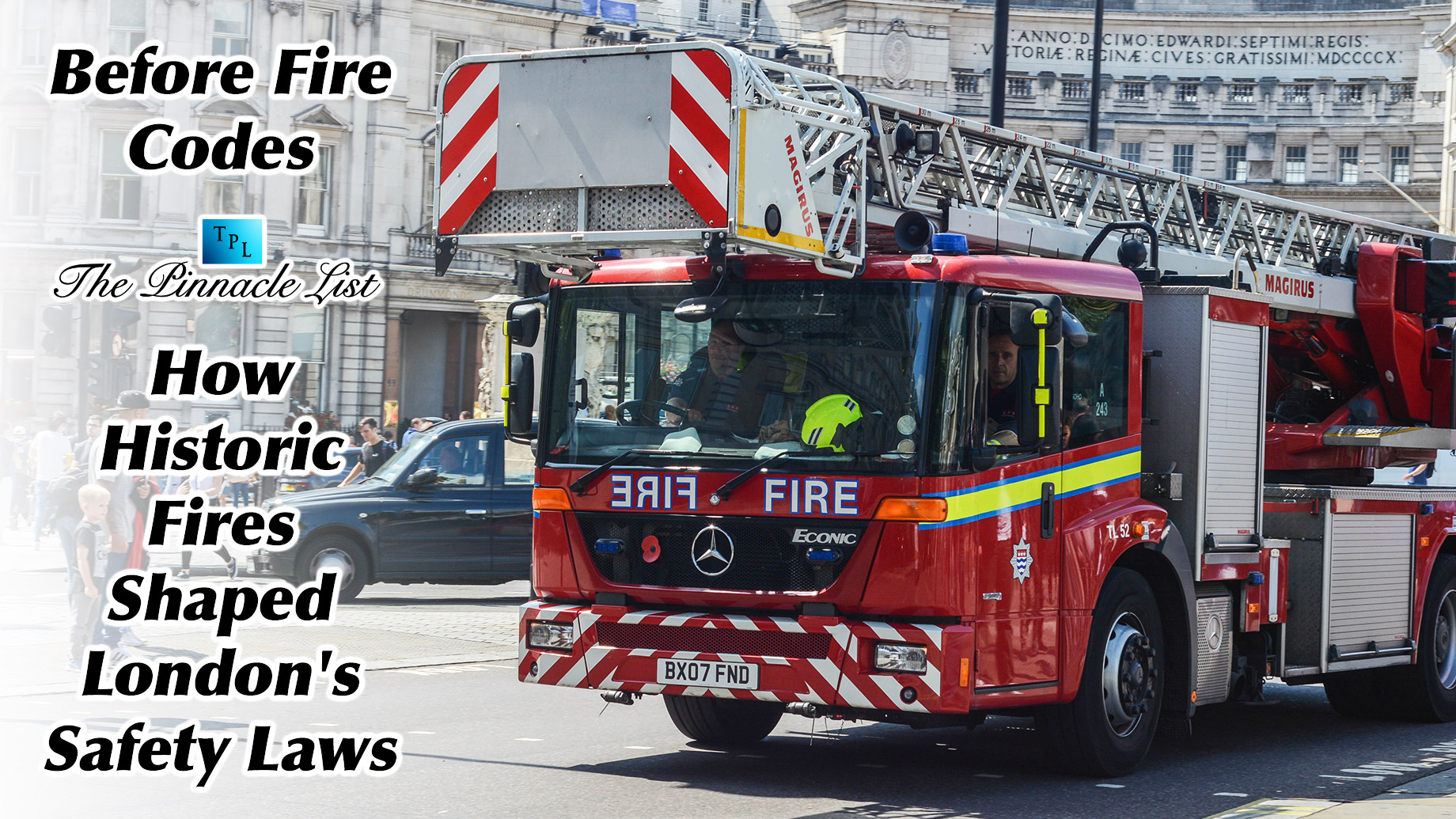
Fire has long been one of the greatest threats to urban environments, and London, one of the world’s oldest and most historic cities, has had its fair share of catastrophic blazes. Before modern fire codes, the city experienced a series of devastating fires that forced authorities to rethink urban planning, construction materials, and emergency response strategies. This blog explores how historic fires shaped London’s safety laws, making it one of the most fire-conscious cities in the world today.
The Great Fire of London (1666): The Catalyst for Change
One of the most well-known fires in history, the Great Fire of London in 1666, serves as the most significant turning point in fire safety regulations. The fire started in a bakery on Pudding Lane on September 2, 1666, and quickly spread through the city’s narrow streets, fueled by wooden buildings and flammable materials. Over four days, the inferno consumed around 13,200 houses, 87 churches, and iconic buildings like St. Paul’s Cathedral.
Impact on Fire Safety Laws
The Great Fire prompted urgent discussions about rebuilding London in a way that would prevent such a disaster in the future. Some of the key regulatory changes included:
- The London Building Act of 1667: This was the first official building regulation in England, requiring buildings to be constructed with brick or stone instead of wood to prevent fires from spreading rapidly.
- Wider Streets and Open Spaces: City planners redesigned streets to be wider, reducing the risk of fire jumping from building to building.
- Banned Overhanging Upper Floors: Previously, buildings had upper floors extending over the street, which contributed to the spread of fire. This practice was outlawed.
- Firefighting Infrastructure: The fire led to the establishment of private insurance-based fire brigades, which were among the first organized firefighting efforts in London.
The Tooley Street Fire (1861): Firefighting Innovations
Almost two centuries after the Great Fire, London experienced another significant blaze, the Tooley Street Fire of 1861. This fire started in a warehouse near London Bridge and burned for two weeks, claiming the life of James Braidwood, the first Superintendent of the London Fire Engine Establishment (LFEE).
Impact on Firefighting Regulations
This disaster highlighted gaps in London’s firefighting capabilities and led to several important changes:
- Formation of the London Fire Brigade (1865): The fire exposed the limitations of private insurance fire brigades, leading to the creation of the publicly funded London Fire Brigade.
- Improved Water Supply for Firefighting: Access to water had been a major issue during the fire. Authorities ensured that more hydrants and higher-pressure water supplies were available for firefighting.
- Enhanced Firefighter Safety Measures: The death of Braidwood underscored the need for better training and protective gear for firefighters.
The Clerkenwell Explosion (1867): Industrial Fire Regulations
The Clerkenwell Explosion was not just a fire but an intentional act of arson carried out by Irish Fenians attacking a prison. The explosion caused widespread fires and destruction, further highlighting the risks of unregulated industrial activity.
Impact on Industrial Fire Safety
- Stricter Regulations on Explosives: The government passed stricter laws governing the storage and handling of explosive materials.
- Improved Security for High-Risk Buildings: Fire safety laws extended to include security measures in places vulnerable to attacks or industrial accidents.
- Better Emergency Response Coordination: The incident demonstrated the need for quicker and better-organized emergency responses, influencing future policies.
The Victoria Hall Disaster (1883): Fire Safety in Public Venues
The Victoria Hall disaster in Sunderland may not have been in London, but its impact on fire safety laws reached the capital. In this tragedy, 183 children lost their lives due to a crush caused by a locked door during a fire.
Impact on Fire Safety in Public Venues
- Mandatory Emergency Exits: Buildings used for public gatherings were required to have multiple, clearly marked, and easily accessible emergency plans.
- Panic Bolt Mechanisms: Laws introduced requirements for outward-opening doors fitted with panic bolts to prevent stampedes.
- Regular Fire Drills and Inspections: Public buildings, including theaters and schools, became subject to fire safety inspections and mandatory evacuation drills.
The Blitz (1940-1941): Strengthening Fire Resilience During War
During World War II, London was subjected to relentless bombing raids, known as the Blitz. These air raids resulted in massive fires across the city, overwhelming fire brigades and destroying thousands of buildings.
Impact on Post-War Fire Safety Laws
- Fire Watch Services: Volunteer fire watchers were assigned to buildings to detect and control fires quickly.
- Stronger Building Materials: Post-war rebuilding efforts used more fire-resistant materials and construction techniques.
- Modern Fire Codes: The devastation reinforced the importance of strict building codes that included fire-resistant designs and sprinkler systems in high-risk buildings.
Modern Fire Safety Regulations in London
Following these historic fires, London continued to develop one of the world’s most comprehensive fire safety regulations. Today, the Regulatory Reform (Fire Safety) Order 2005 sets out responsibilities for building owners and managers, including:
- Fire Risk Assessments: Fire Risk Assessment Mandatory for commercial and residential buildings.
- Sprinkler Systems and Fire Alarms: Required in high-rise buildings and certain public venues.
- Emergency Lighting and Exit Plans: Essential in all major buildings.
- Regular Inspections: The London Fire Brigade conducts inspections to ensure compliance.
Conclusion
London’s fire safety laws were not born overnight but forged in the flames of its history. Each disaster, from the Great Fire of 1666 to the Blitz, contributed to shaping a safer city. Today, London stands as a testament to the lessons learned from past tragedies, with fire regulations that protect lives and property. By understanding the history behind these laws, we can appreciate the importance of continued vigilance and innovation in fire safety.
Fire may always be a threat, but thanks to the lessons of history, London is far better prepared to prevent and respond to fires than ever before.